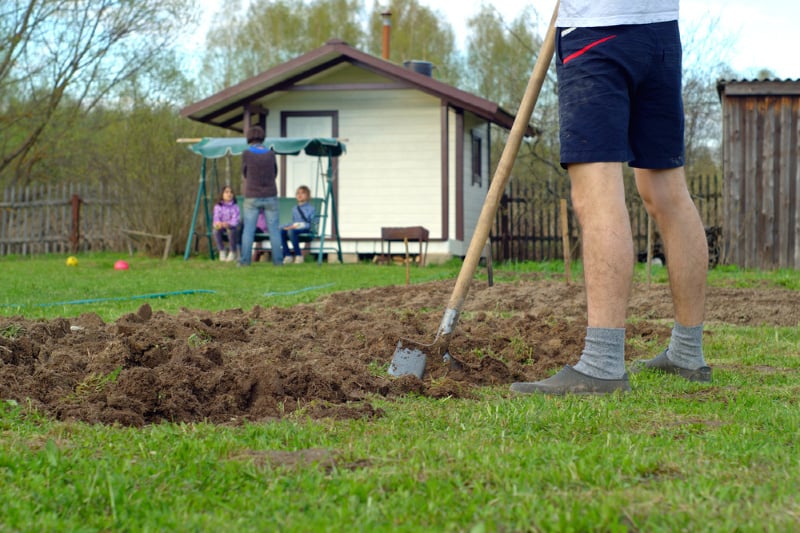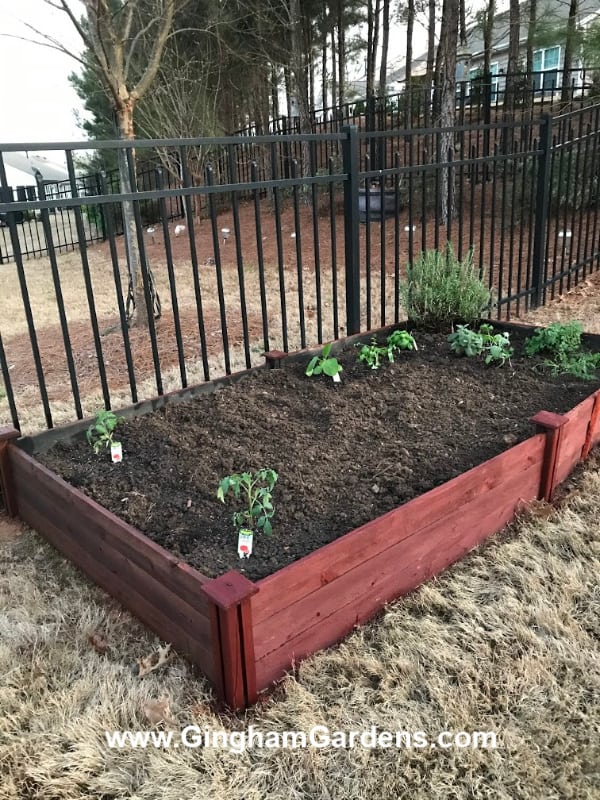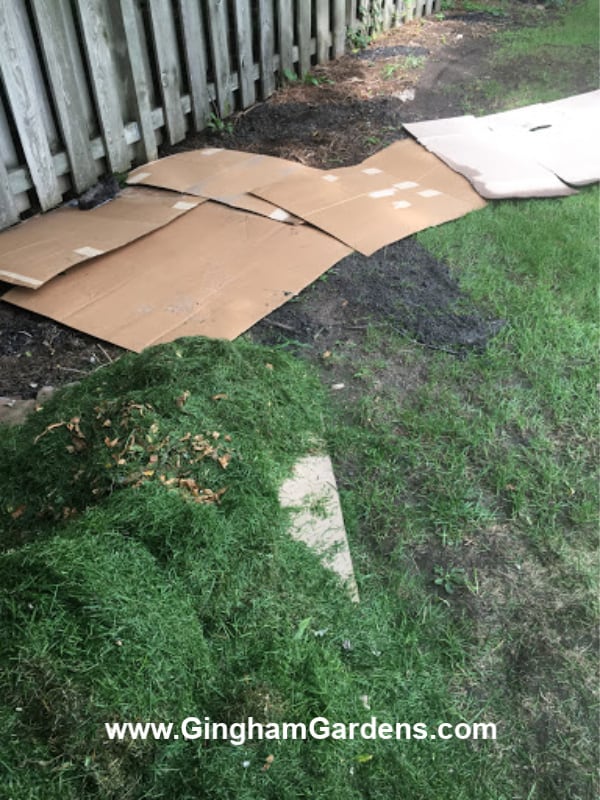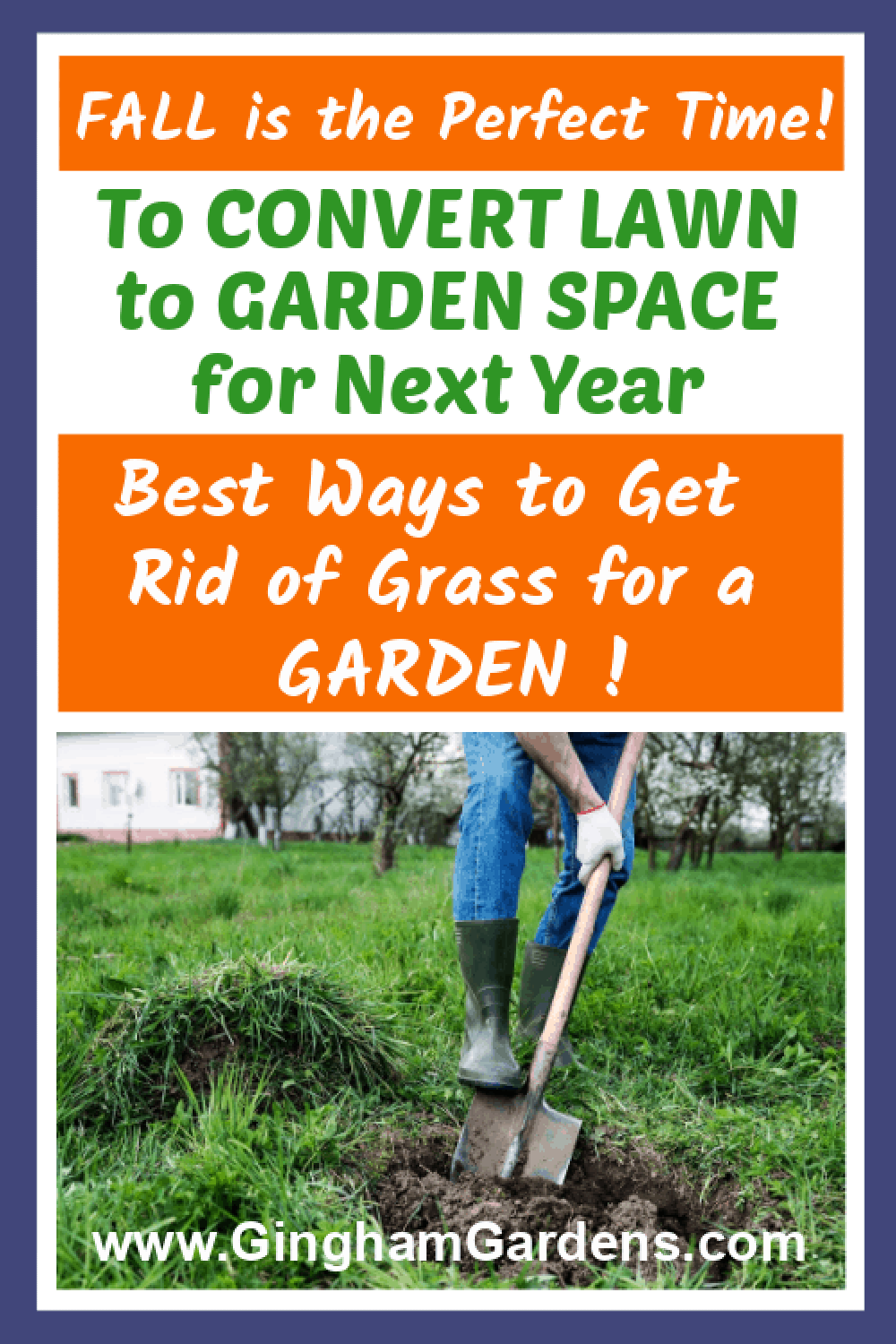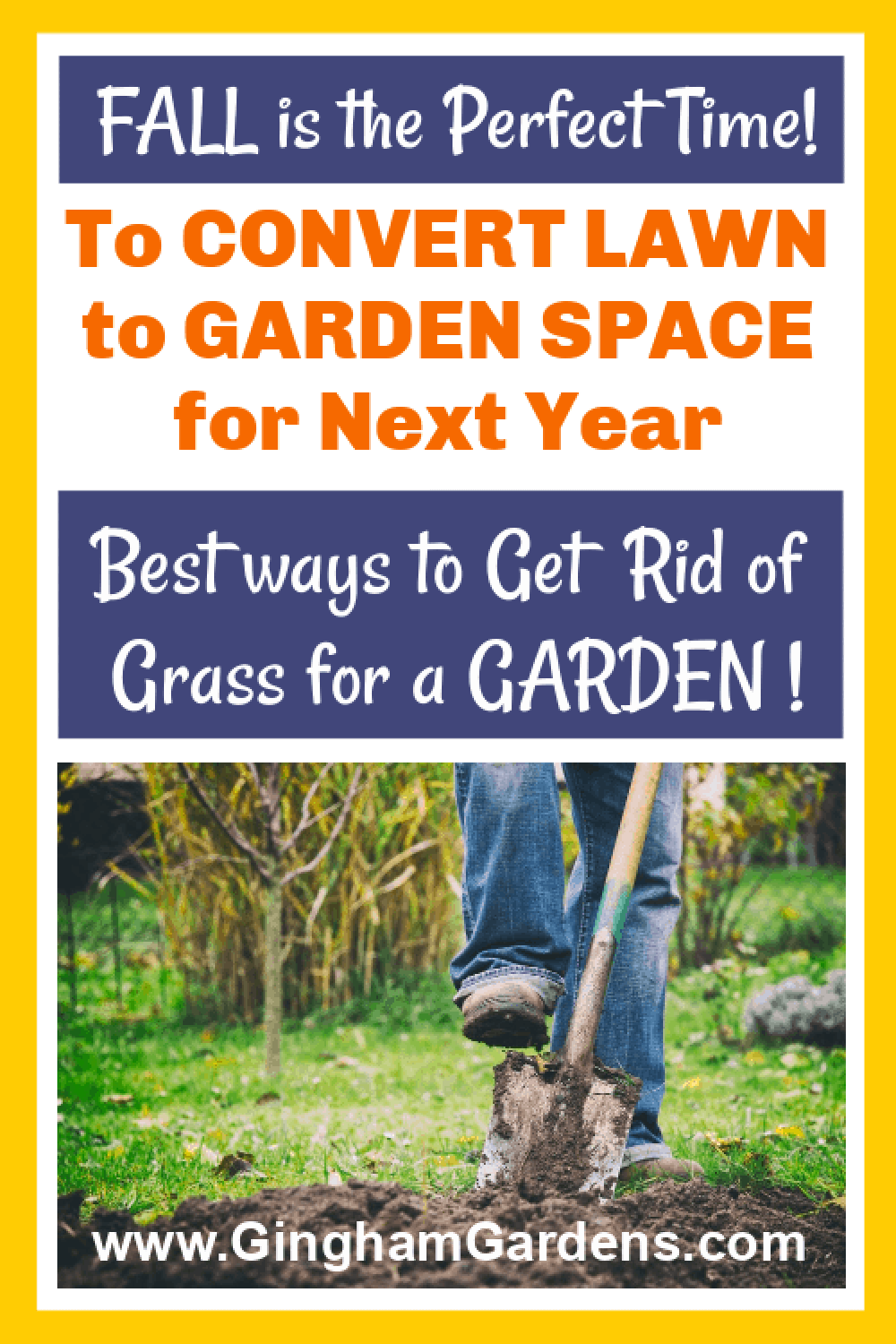Ways to Convert Lawn Into Gardening Space
Whether you want to plant vegetables or create a new flower bed, there are several different ways to convert lawn into gardening space. I’m going to share with you the various methods I have used. What works and what doesn’t, and tips for creating your new garden bed.
Before you even begin to start the process of converting lawn grass into gardening space, you need to choose a location for your new garden bed. Unless, you’re just going to grow shade plants, it’s important to find the sunniest place in your yard and plan your new garden bed there.
If you want to grow vegetables, flowers or a mix, you’ll have the best harvest if the designated area gets full sun. Full sun means more than 6 hours of direct sunlight a day.
It’s also important to think about convenience in maintaining your new garden. Think about the water needs of your new space, and whether or not you want to install drip irrigation. In other words, your new planting area will need to be close to a water source. Although I don’t always heed my own advice, if this is your first garden, start with just a small area for your new planting bed. You can always add on later if you decide you’re really into gardening.
This post contains affiliate links. If you click on
one of the links and make a purchase,
I may receive a small commission at no additional cost to you.
See full disclosure here.
How to Remove Grass for a Garden Bed
First, there’s the age-old method of simply digging. I’ve done it and it’s a lot of hard work and sweaty manual labor. Digging is the best way, if you want your garden space simply cut into the ground. Here’s what you do:
Use a garden hose or a rope and lay it out in the shape of your new garden bed.
Then, simply start digging up the sod. Some will tell you to just turn the sod over, but I don’t recommend doing that. The sod doesn’t usually die just from being turned over. If you do it right, you won’t have to contend with weeds and grass growing back up in your new garden bed.
To dig up the sod, you can rent a professional sod cutter, but I really love my trusty shovel. It’s a lightweight and sharp spade. If you have lots of sod to remove, you might want to consider a sod cutter knife like this one. I’ve started many, many garden areas simply by digging.
Once you have all the sod cut up, it will need to be removed. Pick up the sod and shake the excess soil off of it and then dispose of the sod or replant it in another area of your yard. Don’t toss your sod into a compost bin either. Our local compost place will take sod, because their high temperature compost piles will break the sod down.
If you aren’t going to plant your new area right away, be sure to cover the exposed soil with plastic or cardboard, so weed seeds can’t germinate and it doesn’t become a weed pit before you get to plant.
If you decide to dig up your lawn to make a new garden space, be sure to use some type of edging so that you don’t have grass creeping back into your garden area.
It’s also a good idea to amend the existing soil by mixing in organic matter (a/k/a compost). Check with the county you live in to see if they have a free compost site. If not, bags of compost can be purchased at most big box stores very reasonably. If you’re going to have a garden, it’s a good idea to create a compost pile somewhere in your back yard too.
Raised Bed Gardening (Without Removing Grass)
If you are new to gardening and not sure you’re going to enjoy gardening, perhaps you might want to consider a raised bed garden. Raised garden beds are perfect for growing vegetables, planting an herb garden, growing flowers or really any kind of gardening. They also take less time than other methods because you can sit your raised bed right on top of the grass.
Here’s how you convert your lawn into a raised bed garden area:
If you simply want to plant some vegetables for your family, I would recommend starting with a simple raised bed. This one is very appealing to me and if I were starting over with my raised vegetable beds, I would go with this.
Although the thought of building your own raised garden beds is novel, for the time and money, these vinyl beds are easy to assemble and will last a very long time. It’s important to note here that you want a least a depth of at least 8 inches with a raised bed, and 12 or more inches is even better.
To convert lawn into a raised bed gardening space, first run over the area with you lawn mower cutting the existing lawn as short as you can get it. Next, use landscape fabric to place over the ground where your raised bed will sit. A layer of cardboard or landscape fabric will smother grass and weeds, and eliminate rogue weeds or grass from growing up through the soil.
Once you have your raised bed in place, fill it to the top with a good garden soil and/or compost. One of my pet peeves is to see someone gardening with raised beds with only a few inches of soil in them. That kind of defeats the purpose of a raised bed. It’s a good idea to let your newly filled garden bed sit for a few days, so the soil can settle.
We have raised beds for our vegetable garden area. We just threw something together quickly and the beds are very crude looking, but they serve the purpose. Some day we will replace them, probably with the vinyl ones I mention above, or these galvanized steel ones.
Building Your Own Raised Garden Beds
If you decide you still want to build your own raised garden beds, here are a few tips to remember:
- Make your raised garden beds at least 8 inches deep, 12+ inches is even better. If your raised beds are too shallow, plants will become crowded and won’t have the soil depth to mature and produce.
- Cedar is the best wood for raised garden beds. You can get cheaper wood like pine, but it won’t hold up like cedar will.
- To keep your garden bed sturdy and to finish off the corners, use garden bed corner brackets. For deeper garden beds, these corner brackets are a very good choice.
- To learn more about building your own raised beds, check out Erin’s post at Impatient Gardener. Her raised bed garden is gorgeous!
Use the Lasagna Method to Convert Lawn to Gardening Space
I have often used the lasagna method to convert lawn to gardening space. It’s not the fastest method, but it’s probably the easiest way if you’re not in a hurry. The lasagna method consists of layering cardboard with grass clippings and shredded leaves over any grassy area that you want to kill.
The idea is the cardboard, leaves and grass clippings smoother the existing lawn, and then break down into organic material and serve to fortify the soil. The lasagna gardening method is also sometimes referred to as sheet mulching. Thick layers of newspaper work too, but paper breaks down quicker than cardboard, so you may have some breakthrough grasses and weeds.
It takes several weeks for this method to sufficiently kill off grass and weeds and sometimes you will still have weeds popping through to contend with. Fall or is the best time of year to start the process of killing off grass lawns. The area can be left over the winter. The following growing season your area is almost ready for planting. This can also be done in late winter or early spring if you live in an area that doesn’t have a lot of snow cover.
It’s important to note here that there will be some additional preparation measures required before you plant. First, go though the space and make sure all the leftover weeds and grass roots are dug up. Some weeds like dandelions do not like to die. Add in soil amendments, like a thick layer of compost, and rake over the entire area to level it. Now, you are ready for planting!
Planning and Planting Your New Garden Bed
Now that you have transformed a portion of the lawn into garden space, you’re ready for planning and planting your new vegetable garden or flower garden. If you’re new to gardening, or if you’ve only been gardening a few years, to insure the best results, you’ll want to check out these posts – Vegetable Gardening 101 and Flower Gardening 101.
Thanks so much for stopping by Gingham Gardens today. I appreciate your visit! Do you have questions about converting your lawn to garden space, or any other gardening questions, feel free to leave a comment below.
Happy gardening,
Joanna
p.s. Follow Gingham Gardens on Pinterest for lots of great gardening ideas and tons of gardener’s eye candy. Gingham Gardens is also on Facebook – come say “hi.”
Pins for your Gardening Board on Pinterest:

